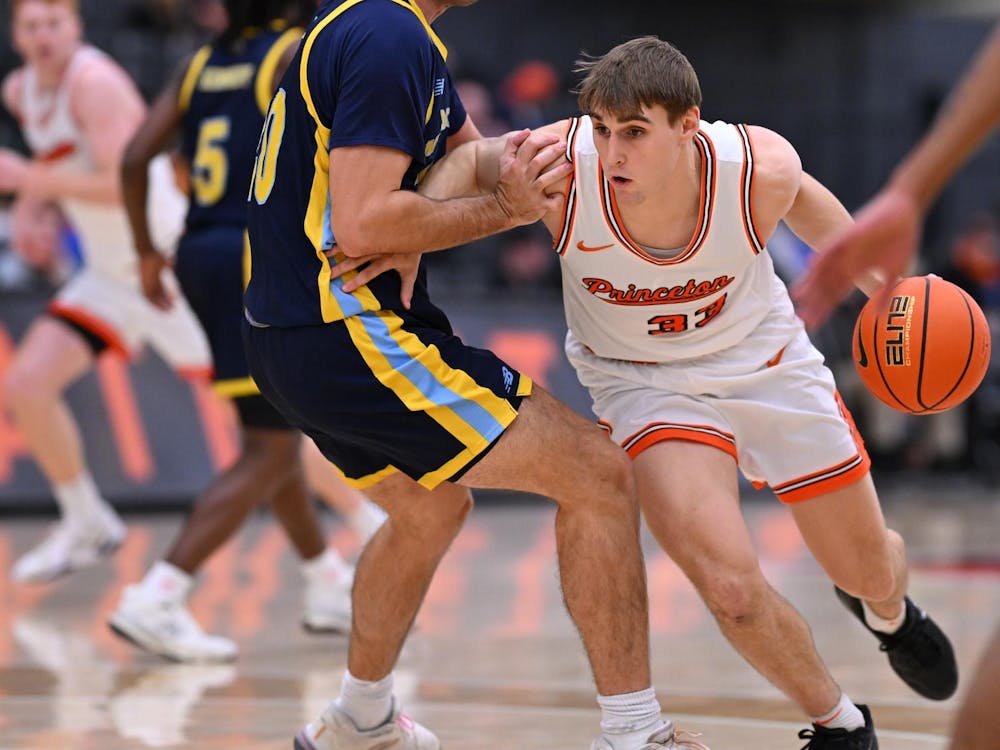"Just don't get burned." This is phrase enters a defensive back's head almost every time he is tested in man-to-man coverage. Not only has the Princeton secondary avoided getting burned, it has been a rock to stand on for the Ivy League-leading football team. The Tigers are 4-1 overall and 2-0 in the conference.
So far this season, football has relied heavily on its defense to keep it in games that were slipping away. One of the most marked improvements from a season ago is in the pass defense, specifically in the secondary.
In the last two games, wins over Ivy-rival Brown and Colgate, a team Princeton had not beaten since 1997, sophomore cornerback Jay McCareins has ended the opposing team's final drive with an interception.
In fact, he ended Brown's final two drives with interceptions, and for his efforts, he was named Ivy League Defensive Player of the Week.
It was not just McCareins, however, who excelled against Brown in the defensive backfield. The entire secondary shut down Brown for much of the game, a trend that has become nearly commonplace.
"Big players make big plays in big games," head coach Roger Hughes said.
"Certainly, I think Jay [McCareins] did that. [Senior cornerback] Paul Simbi had a chance to get another pick. Paul Simbi played super today. [Junior free safety] Brandon Mueller and [senior strong safety] Kevin Kongslie — they both did a nice job."
Junior cornerback Blake Perry makes up the last piece of the big five of Princeton defensive backs. Perry was named the league's defensive player of the week for his play in Princeton's win over Columbia. He had eight total tackles against Brown, including one for a seven-yard loss.

All of this could still be seen as a single stellar performance of the secondary in one game. But the secondary has consistently shut down opposing offenses this season, putting a check in the 'W' column in a handful of close games.
The biggest point of improvement for a defensive backfield that seemed porous at more than one point last season seems to be experience. Every one of the five players mentioned above started at their position last year, and most of them saw significant playing time in the years before that.
"There is a maturity factor," defensive backs coach Eric Jackson said. "They are pretty talented, but you still have to grow up, and learn a lot."
In terms of yards, the Princeton pass defense is fourth in the Ivy League, but it is the only team that has allowed a completion percentage at 50 percent or lower, a much more telling statistic about team defense. To attribute this team success to the defensive backs alone, however, would be inappropriate.

"Pass defense works in three ways," Jackson said. "A great pass rush, the underneath coverage from the backers and the underneath defensive backs, and then the deep guy. It's not just the guys in the back, it's everybody."
The Tiger front seven, notably junior linebacker Zak Kesey, have pressured opposing quarterbacks all season.
To diminish the role of the secondary in Princeton's 4-1 season, however, is also inappropriate. The defensive backs have made big plays to keep the Tigers in the game for all of the team's wins, which have all been close in the second half.
Against Lafayette, Mueller tipped a pass that was then intercepted to end the Leopards' comeback. In a tight game at Columbia, Kongslie recovered a key fumble that Simbi forced.
And, in the last two games, McCareins has preserved the win with his final-drive heroics.
The Princeton secondary has come through so often in the clutch. Opposing teams should watch out so that they do not get burned.







